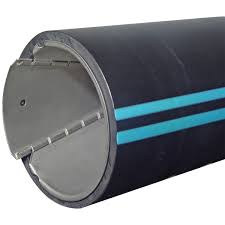Sep . 16, 2024 13:26 Back to list
hdpe to steel coupling service
Understanding HDPE to Steel Coupling Services
In the world of industrial piping systems, proper coupling of different materials is essential for ensuring efficient and safe operations. One common pairing is that of High-Density Polyethylene (HDPE) and steel. Each material has unique properties that make them suitable for specific applications, but they can also complement each other effectively through the use of appropriate coupling services.
What is HDPE?
High-Density Polyethylene (HDPE) is a versatile plastic widely used in various applications, including water and gas pipes, drainage systems, and packaging materials. It is known for its excellent corrosion resistance, lightweight, flexibility, and durability. These properties make HDPE an ideal choice for environments that demand resilience against harsh chemicals or extreme weather conditions. Furthermore, HDPE is less susceptible to breaking or cracking compared to traditional materials like steel.
Why Steel?
Steel, on the other hand, is revered for its high tensile strength and suitability for heavy-duty applications. Steel pipes are commonly used in the oil and gas industry, in structural systems, and for transporting high-pressure fluids. While steel offers excellent mechanical properties, it is prone to corrosion in certain environments, making it less than ideal for some applications without proper protective measures.
The Need for Coupling
In many industrial applications, a piping system may require the imbedding of both HDPE and steel components. For instance, a system might use steel pipes for a long underground run due to their ability to withstand high pressures, while utilizing HDPE for sections that require flexibility and resistance to chemical exposure. This often necessitates the use of couplings to connect the two different materials efficiently.
hdpe to steel coupling service

Types of Couplings
There are several types of HDPE to steel couplings available, each designed to accommodate the unique properties of both materials. One of the most common coupling methods is the use of mechanical couplings, such as flange adapters or transition fittings. These are designed to provide a secure and leak-proof connection between HDPE and steel pipes. Additionally, electrofusion fittings can also be utilized, where an electrical current is used to fuse the HDPE connection securely.
Benefits of HDPE to Steel Couplings
Implementing HDPE to steel coupling services offers various benefits. First and foremost, it ensures operational efficiency by enabling the effective transport of liquids and gases without leaks or failures. Furthermore, the combination of HDPE and steel in one system leverages the strengths of both materials—HDPE’s corrosion resistance and flexibility partnered with steel’s strength and durability.
Additionally, these couplings are often easier and quicker to install compared to traditional methods, saving time and reducing labor costs. This efficiency proves valuable in industries where downtime can translate to significant financial losses.
Conclusion
In conclusion, HDPE to steel coupling services are essential in creating versatile and robust piping systems that meet diverse industrial needs. By integrating the properties of HDPE and steel through suitable coupling techniques, industries can enhance their operational efficiency, increase the longevity of their infrastructure, and ensure the safety and reliability of fluid transport systems. As technology continues to advance, the methods and materials used for these couplings will likely evolve, further improving connectivity solutions in the industrial sector.
-
High-Quality PVC Borehole Pipes Durable & Versatile Pipe Solutions
NewsJul.08,2025
-
High-Quality PVC Perforated Pipes for Efficient Drainage Leading Manufacturers & Factories
NewsJul.08,2025
-
High-Quality PVC Borehole Pipes Durable Pipe Solutions by Leading Manufacturer
NewsJul.08,2025
-
High-Quality PVC Borehole Pipes Reliable PVC Pipe Manufacturer Solutions
NewsJul.07,2025
-
High-Quality UPVC Drain Pipes Durable HDPE & Drain Pipe Solutions
NewsJul.07,2025
-
High-Quality Conduit Pipes & HDPE Conduit Fittings Manufacturer Reliable Factory Supply
NewsJul.06,2025

